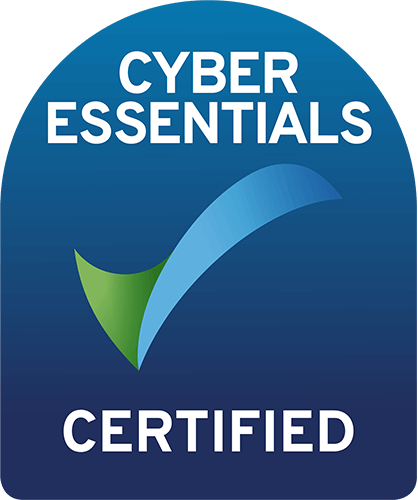Consider the task of developing a cutting-edge pharmaceutical asset as the maiden voyage of a cargo vessel setting sail to deliver valuable freight to its destination. The vessel (the pharmaceutical asset) must journey across unpredictable waters, through favourable and adverse weather conditions, to a destination of commercial success and broad patient impact. What distinguishes the ships that make it safely, delivering their cargo (commercial value and patient impact), from those that languish at sea? The answer lies in the navigator’s compass: early lifecycle management (LCM) planning.
Without this compass, even the strongest vessels risk drifting off course, missing critical opportunities, and running aground on unforeseen obstacles. With the compass, the vessel not only finds the most efficient route but also adapts throughout its journey, seizes opportunities whilst on route, and ensures every ounce of value reaches its intended destination.
What Does Early Lifecycle Management Planning Unlock?
Initiating lifecycle management planning in the early stages of an asset’s development is essential in paving the way for downstream success. Due to the sheer volume of demands when it comes to preparing a drug for launch, LCM planning is often deferred in favour of tackling shorter-term (and perceived more immediate and urgent) business priorities.
However, whilst estimates vary, it is estimated that companies that conduct proactive LCM planning early in an asset’s lifecycle can derive 30-60% more lifetime revenue per asset than companies that don’t.
*Figure is an aggregate from several industry and market intelligence reports
Furthermore, by the time the asset launches, critical opportunities may already have been lost – opportunities that earlier strategic LCM planning could have secured. In the case of the cargo vessel, the navigator doesn’t acquire a compass half-way through the journey – they have it from the start and use it the moment they set sail.
Importantly, effective lifecycle management planning isn’t a case of simply identifying high priority indications or geographies to expand into following your initial launch, it is about systematically unlocking commercial options, competitive advantage, and long-term value. Done properly, it enables several critical ingredients to extract the most from an asset.

1. Crafting a Compelling Storyline and Narrative
In what is currently a resource-constrained environment, where leadership must constantly prioritize and re-prioritize, creating a robust, data-driven narrative is essential. Early lifecycle management planning provides a map and evidence foundation to craft a narrative which is anchored in long-term value, not just immediate milestones.
- Storytelling and stakeholder buy-in: With effective early LCM planning, teams can narrate a compelling, credible journey for the asset, translating clinical evidence and market intelligence into a clear value proposition.
- Management alignment: Early LCM enables cross-functional teams to align on a unified vision for the asset. Such alignment is influential in empowering leadership to confidently greenlight investment decisions and resource allocation.
2. Maximizing Licensing and Partnership Potential
The industry is currently navigating a perfect storm which is partly being driven by two major forces: an unprecedented looming patent cliff and shifting policy dynamics. Between 2025 and 2030, over $200 billion in annual revenue is estimated to be at risk as major products which have long been the lifeblood of their manufacturers’ revenues lose exclusivity. At the same time, policies such as the Inflation Reduction Act and the Most-Favored-Nation Executive Order are introducing commercial risks that the industry has not previously encountered, with cost-containment measures that are squarely targeted at the manufacturers. This perfect storm means that for many companies, out-licensing or partnering is a more attractive option than ever because it enables companies to spread the ever-increasing risks associated with drug development and commercialization. For some, licensing and partnership deals are fast becoming core to their long-term strategy.
Early lifecycle management planning can play a role in enhancing the value of these deals by:
- Minimizing uncertainty: Prospective partners or licensors gravitate towards confident, de-risked assets. Early LCM planning helps to reduce unknowns that can create uncertainty by anticipating and addressing clinical, regulatory and commercial risks.
- Highlighting expansion opportunities: Data-driven LCM uncovers new indications, formulations, or geographical opportunities, providing options that increase a deal’s perceived value.
3. Navigating Macro-environmental Storms
The drug development journey is fraught with shifting regulatory tides, emerging competitors attempting to mold the scientific discourse in favor of their asset, and constantly evolving macro-economic and geopolitical dynamics. If done early, LCM can serve to equip companies with:
- An adaptive strategy: Early LCM planning can help companies to establish a dynamic planning process, which can readily pivot as new scientific, regulatory, or market events unfold.
- Regulatory and market intelligence: By building robust evidence plans and knowledge management systems (informed by early LCM planning) from the outset, companies can anticipate changing trends, rather than react to them.
How Does Early LCM Planning Secure Value?
A vessel’s hold may be filled with valuable cargo, but only the cargo that safely makes it to its destination contributes to its prosperity. Early lifecycle management planning serves to expand the size of the hold, secure its contents, and ensures every opportunity is captured. In practice, what does this mean?

Commercial Horizons Expand:
- Unlocking new indications and populations: Strategic LCM planning early enables teams to identify indication expansion opportunities and the sequence at which to pursue those opportunities, maximizing patient reach.
- Geographic expansion: Planning for regulatory and commercial hurdles in diverse regions early increases the chance of successful launches across markets. Importantly on this point, regional input is needed to aid in understanding local needs, the competitive situation, and the customer composition of diverse global regions. LCM planning should consider regional variances and allow the asset to be strategically positioned for success across regions.
Value is Defended and Sustained:
- Deep and sustainable market penetration: Developing a compelling narrative and a strong, differentiated value proposition for the asset, one that not only drives initial launch success but also ensures long-term relevance, sustainability and competitiveness as market and competitive dynamics shift and evolve.
- Revenue maximization: Early LCM planning enables manufacturing, supply chain, and commercial strategies to work in synchrony, preventing revenue loss due to launch delays, product bottlenecks, or pricing missteps.
Resilience and Options are Built:
- Mitigating risk: By analyzing and addressing operational, regulatory, and market risks early, companies create robust risk-mitigation plans and contingency strategies.
- Creating strategic choices: Smart early planning opens multiple routes to value, for example the option to ‘go it alone’, seek a partner, or pursue M&A.
What Are the Risks of Not Planning Early?
Failing to integrate lifecycle management planning into the earliest stages of an asset’s journey leaves the ship vulnerable to the torrent of hurdles and risks that it will experience on the way.

1. Navigational Drift Leads to Operational Inefficiencies
Companies that do not have a shared, cross-functional vision and strategy for their asset suffer:
- Siloes and rework: Teams pull in different directions, duplicating efforts, missing synergies, and slowing delivery.
- Cost overrun and delays: Uncoordinated development and misaligned activities across teams and functions can lead to costly course-corrections.
2. Value Lost to the Depths
In other words, revenue that is never realized (recall the 30-60% more lifetime revenue that is left on the table by not doing proactive early LCM planning). Whilst these missed opportunities are invisible in company financials, they have huge implications on commercial performance and patient impact. This uncaptured revenue is caused by a multitude of factors:
- Suboptimal launches and market penetration: Without robust strategies for launch sequencing, indication expansion, or life-extending formulation improvements, revenue will ‘leak out’ over time.
- Shortened asset lifecycle: A lack of LCM planning will provide competitors with the opportunity to erode market share sooner and more aggressively.
3. Patients are Left Stranded
Perhaps the most important of all risks, patients lose out:
- Unrealized reach: Without strategies to expand the label, address different populations, or adapt delivery, many patients remain underserved.
- Inequitable access: Failing to tackle geographic or pricing barriers denies life-changing treatments to the global patient communities that need them.
In short, the risk of not implementing early lifecycle management is that an asset that starts with promise may ultimately only deliver a fraction of its potential. Companies that fail to optimize LCM planning early experience lower returns than their more proactive counterparts.
Best Practices for Early Lifecycle Management Planning
If you are determined to realize the full commercial potential of your asset, the following elements are essential.

Anchor Early, Revisit Often:
- Initiate LCM planning in R&D: Start evaluating all facets of the market (competitors, regulatory, access, operational) and defining your vision and strategy for the asset not just close to launch, but as soon as proof-of-concept is secured.
- A dynamic, ongoing process: LCM planning is not a ‘one-and-done’ exercise. It should evolve with the asset. Build in regular reviews to update strategy in light of changing evidence, competitor activity, and external conditions.
Cross-functional Collaboration is Your Crew:
- Break down silos: Empower global teams to operate across organizational lines, continuously surfacing insights and aligning actions.
- Engage stakeholders: Involve Medical Affairs, regulatory, commercial, manufacturing, and legal from the outset; everyone on this ship has a role to play.
Leverage Evidence and Intelligence
- Build evidence early: Prioritize the development of an evidence-generation plan, outlining the evidence that will be gathered throughout the asset’s lifecycle. Consider not just the trial endpoints, but real-world evidence and health economics outcomes research to continue to prove value to regulators, payers, prescribers and patients.
- Market and competitive intelligence: Implement ‘smart’ continuous monitoring to anticipate how the landscape is shifting and identify events that may warrant a change in strategy.
Prepare for the Unexpected
- Scenario planning: Consider different scenarios pertaining to regulatory hurdles, evolving reimbursement criteria, and competitor activity, and how you will respond if and when those scenarios become reality.
- Risk management: Document known and potential risks, establish mitigation plans, and ensure readiness for rapid course correction.
Conclusion: Steering Towards Full Value
Early lifecycle management planning should not be an optional exercise. It is the navigator’s compass and a well-trained crew which are essential to a voyage where every piece of cargo is precious.
Done effectively, companies can:
- Communicate clear, compelling value stories to decision-makers
- Attract and secure the best licensing or partnership opportunities
- Adapt to changing and sometimes volatile market conditions
- Maximize commercial returns and global patient benefit
As the industry continues to confront turbulent waters, there has never been a more important time for pharmaceutical companies to equip their vessels with the compass of early lifecycle management. Only then can we ensure that each voyage delivers on its full measure of value, for organizations and patients alike.
Looking to get started on your own? Check out our practical lifecycle management framework designed to support better decision-making as you approach the opportunities and challenges your asset faces across its lifecycle.
Whether you are looking to initiate an early lifecycle management planning process, or if you already have a process that you are looking to refine, Align Strategy can partner with you to ensure that you and your team have the tools and know-how to execute effective lifecycle management planning and maximize the value of your asset.


